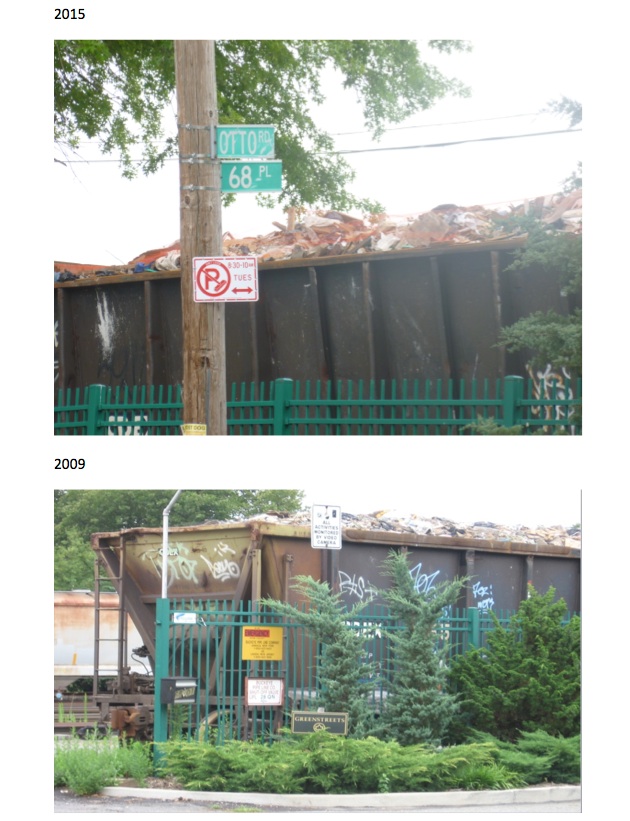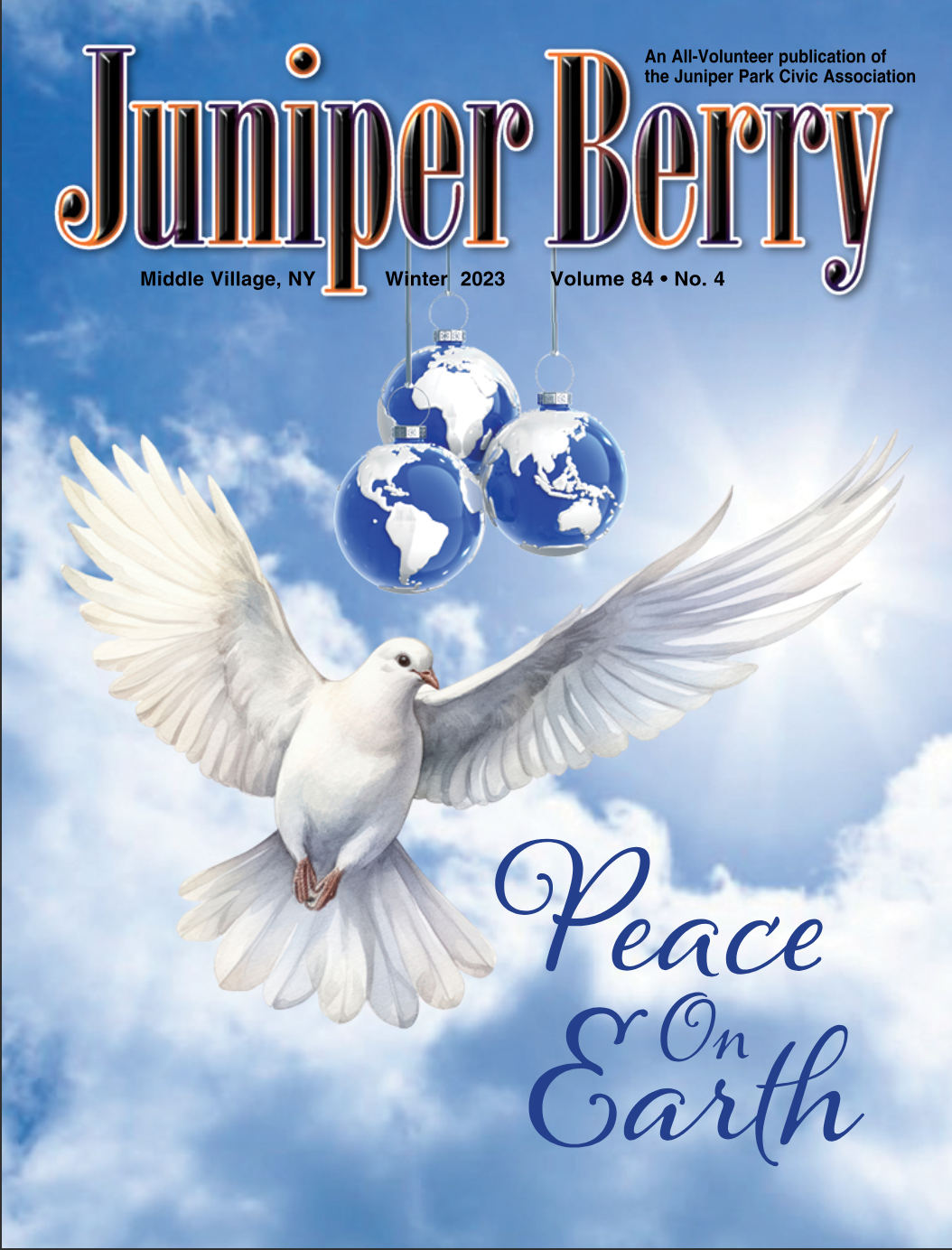Ever since a coalition of Queens civic groups started Civics United for Railroad Environmental Solutions in November 2009, we have had two goals: 1. Eliminate pollution and noise from the 1970’s freight locomotives that operate in our communities, and 2. Contain waste spillage, blowoff, leachate, and odors within rail cars. So 14 years later, what progress have we made in reaching these goals? The answer is a lot, and the pace of change is accelerating.
A major victory in the NYS 2023 NYS Legislative session was the waste containment Legislation Assemblymember Jenifer Rajkumar got passed unanimously in the NYS Assembly, and Senator Joe Addabbo got passed with strong support in the Senate. There was broad support because rail cars of waste adversely impact communities across New York State. Governor Hochul signed the bill into law, and A4928-SS2022 goes into effect on January 1, 2024.
According to the new law, putrescible waste must be covered with a hard sealing cover, as the New York & Atlantic Railway tariff specifies today. But instead of leaving it up to the railroads to set standards and enforce them, that will be the responsibility of New York State.
The new law also specifies that non-putrescible waste — like the Construction and Demolition Debris the NYS Department of Environmental Conservation assumes contains toxics — must be covered with “hard tarps” that
do not extend beyond the top of the rail car. We’ll have to wait and see what coverings will be used January 1, 2024, when the rail gondolas of Construction & Demolition Debris that currently are being hauled with pervious orange netting must be covered with the “hard tarps”.
Another major victory is the ongoing accumulation of annual NYS Legislative funding for Tier 4 or cleaner locomotives — a whopping $31 million since 2013. LIRR could leverage this state money by using it as a match for a Federal Railroad Administration Consolidated Rail Infrastructure and Safety Improvements (CRISI) grant that could add millions in federal funding to the state funding that is just sitting in NYC Comptroller’s Contact #DR36644 now. Assemblyman Andy Hevesi has faithfully and successfully sponsored this appropriation since 2013. This is money that the New York State Legislature has given to the NYS Department of Transportation for LIRR to repower both LIRR work trains and New York & Atlantic Railway freight locomotives. However, according to the NYS Comptroller’s Open Book, website the LIRR has spent only $4,650,739.15 of the $31 million since 2013 to buy locomotives for the New York & Atlantic Railway to use. Locomotive manufacturers Wabtec, Caterpillar Progress Rail Services, KLW, and other manufacturers offer Tier 4 and cleaner freight locomotives.
Another long-awaited development is that for the first time since 2015, US EPA is working on updated Clean Air Act Regulations for new and remanufactured locomotives. EPA also is allowing California to set emissions standards for in-use locomotives. California’s regulation includes a prohibition against using locomotives that are 23 years old or older, starting in 2030. California’s regulation also has a pathway to reach zero emissions locomotive fleets by 2047 at the latest. When its regulation is approved, California is going to make railroads put money into an account based on how much carbon they emit — so they are going to have to pay for the pollution they emit in neighborhoods. Once this regulation is approved, NYS can ask EPA to adopt it, as NYS has with California’s truck regulations. This will aid communities by Fresh Pond Yard that have been suffering for decades from locomotive pollution and noise impacts. Almost all of the old, high-polluting freight locomotives the New York & Atlantic Railway is using, and all of the freight locomotives the LIRR and Providence & Worcester are using would be banned under California’s new regulation.
Another positive development is the enactment of Zero Waste legislation by the New York City Council, including citywide organics pickup that has the potential to remove 41% of the Municipal Solid Waste “Black Bag” tonnage that NYC DSNY exports to landfills and incinerators — potentially composting it instead. Why is this important? If the 41% of tonnage that is organics is diverted to Brown Bills and Community Compost sites, that is 41% less Black Bag trash going out of Fresh Pond Yard by rail. It costs $500 million a year to export NYC’s trash, which is literally money thrown away, and $200 Million of this is organics. NYC’s trash export creates problems for communities at every step of the pickup, processing, export, landfilling, and incineration process — including diesel exhaust from transport, foul odors, air, water, and land pollution, and the generation of massive amounts of Climate-altering emissions, mainly from methane emissions from landfills. Landfills also pollute land and water with PFAS and other toxic chemicals, and emit toxic hydrogen sulfide gas. Composting, on the other hand, sequesters carbon instead of producing climate-altering greenhouse gas emissions, and produces a beneficial soil amendment.
However, in a recent setback the Mayor eliminated a tiny $4.4 Million budget for Community Composting — the most cost-efficient and high quality type of composting — including 8 sites the city has been funding for decades, These sites include the Queens Botanical Garden and Big Reuse. The education, outreach, compost distribution, 115 community jobs, and composting drop off opportunities these sites provide for hundreds of thousands of NYC residents and city agencies each year are more important than ever. And organics that are composted don’t wind up in rail cars. Let’s hope by the time this is published this penny wise, pound foolish disaster is averted.




